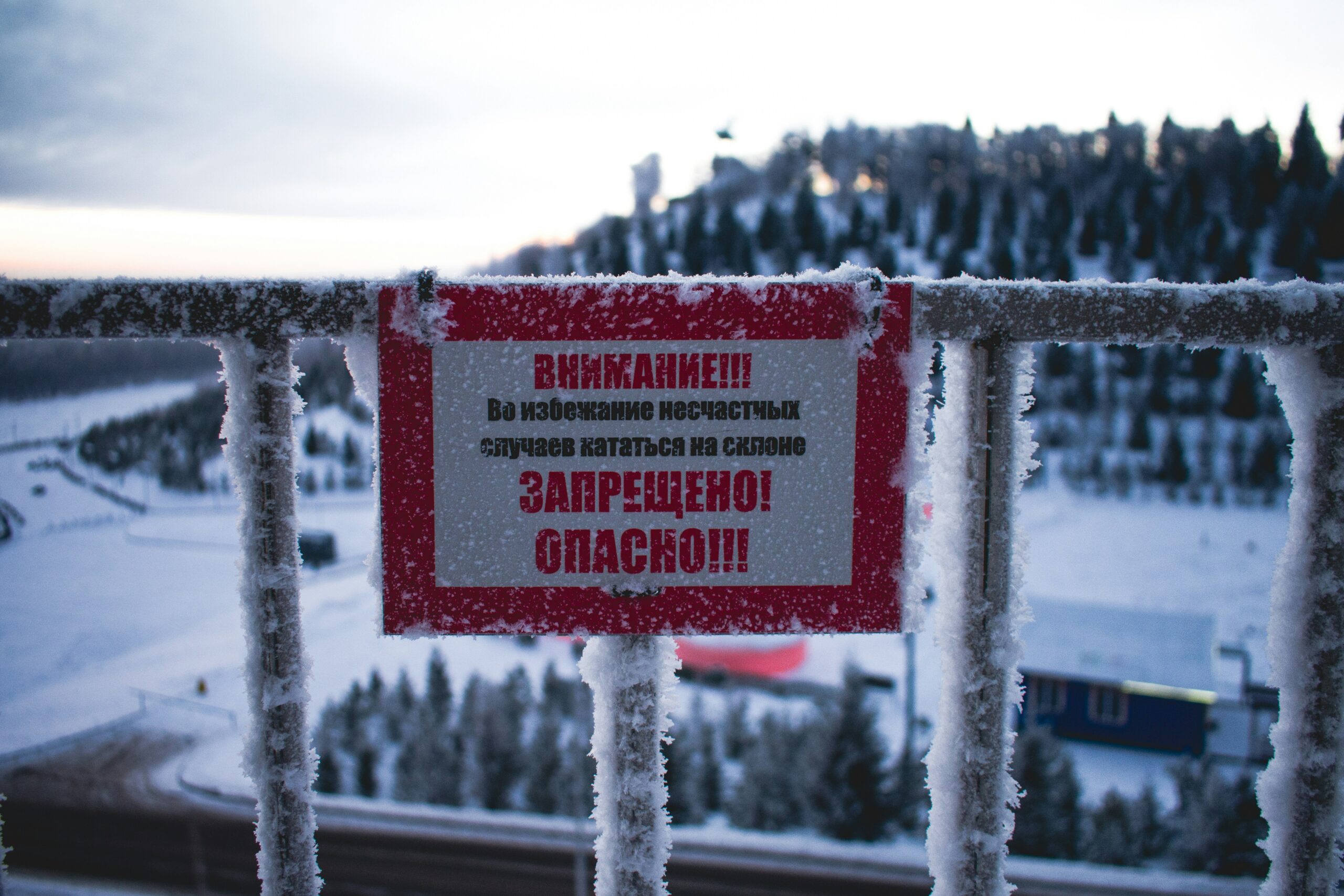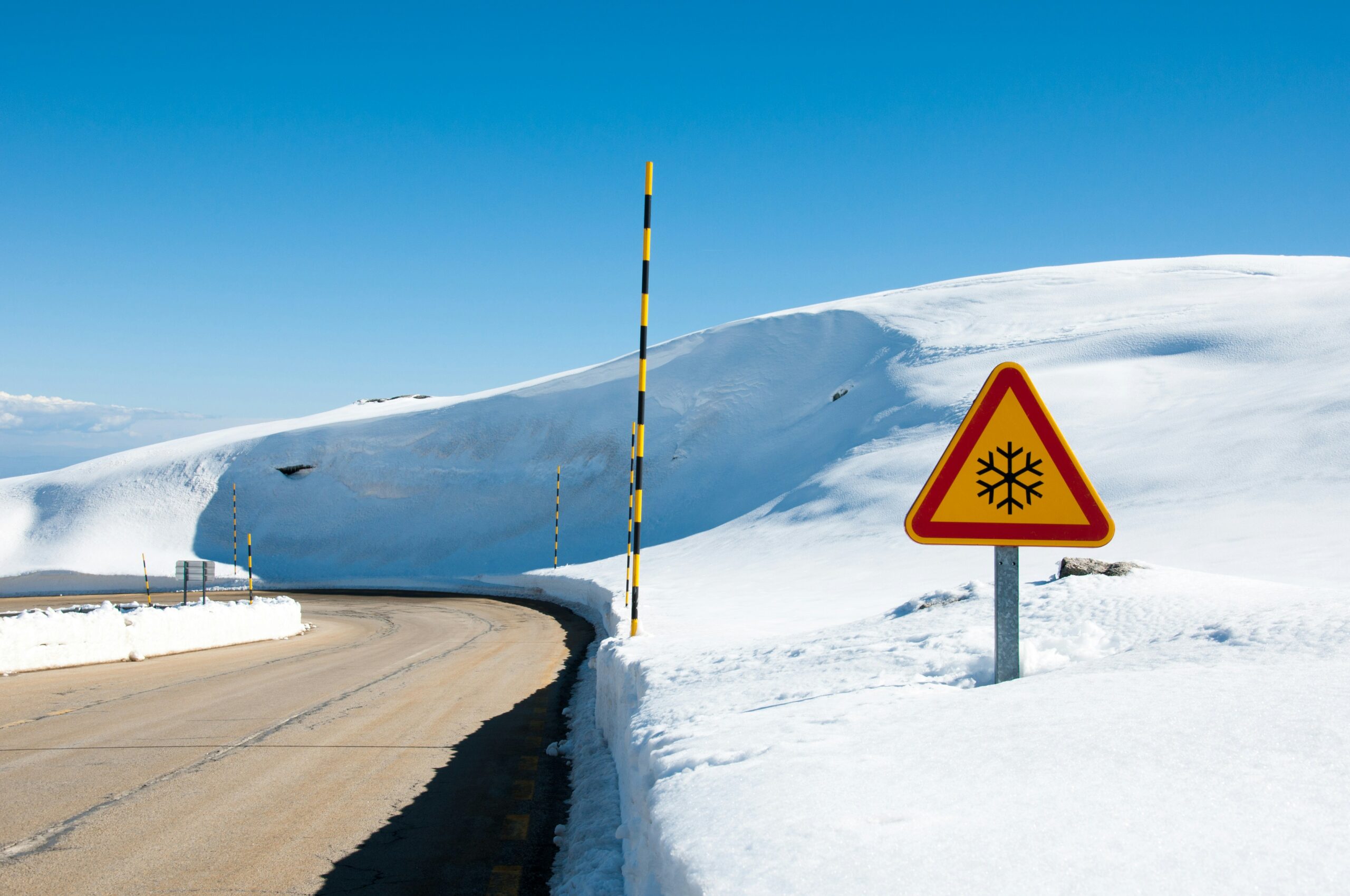Understanding Blizzard Warnings in Manitoba
Blizzard warnings are critical alerts issued by meteorologists to inform the public about severe winter weather conditions that can pose significant hazards. In Manitoba, a blizzard is defined by specific criteria that encompass a combination of high wind speeds, substantial snowfall amounts, and low visibility. These factors work in conjunction to create dangerous conditions, making it essential for residents to recognize the implications of such warnings.
The first major component of a blizzard warning is wind speed. To qualify as a blizzard, sustained winds must reach at least 40 kilometers per hour (25 miles per hour). These strong winds can lead to the blowing and drifting of snow, further reducing visibility and creating treacherous driving conditions. Consequently, gusty winds can exacerbate existing snow conditions, creating whiteout situations that make travel nearly impossible.
Next, significant snowfall is another determining factor. A blizzard warning is typically issued when the region expects six or more centimeters (approximately two inches) of snow within a 12-hour period. This level of snowfall adds to the already challenging conditions, as it accumulates quickly and can lead to road closures and hazardous travel situations.
Visibility is the final criterion for blizzard conditions. Visibility must be reduced to less than 400 meters (about one-quarter of a mile) due to snow or blowing snow for a sustained period, usually three hours or more. This low visibility greatly hinders a person’s ability to navigate safely, increasing the likelihood of accidents.
In summary, understanding blizzard warnings in Manitoba requires awareness of the associated wind speeds, snowfall amounts, and visibility standards. These elements help gauge the severity of potential blizzard conditions, which pose various dangers to both individuals and communities. Properly recognizing and heeding these warnings is crucial for ensuring safety during extreme winter weather events.
Impact of Blizzard Warnings on Education
Blizzard warnings play a crucial role in shaping the educational landscape in Manitoba, particularly concerning the decision-making processes surrounding school closures. When weather forecasts indicate severe conditions, such as heavy snowfall or dangerously low temperatures, local school boards face the critical task of assessing whether to keep schools open or close them for the safety of students and staff. This decision is influenced by various factors, primarily focused on ensuring the well-being of the school community.
One of the primary considerations is the safety of students traveling to and from school. In many parts of Manitoba, especially in rural communities, transportation may become hazardous due to thick snow and poor visibility resulting from blizzard conditions. School boards often consult with transportation services to evaluate road conditions and determine if it is safe for school buses to operate. Additionally, areas prone to drifting snow can create unknown dangers for students who would normally walk to school. Consequently, the priority remains on minimizing risks during these adverse weather events.
Another critical aspect that influences these decisions is the welfare of staff members. Educators and administrative personnel also travel to school under similar conditions as students, and their safety is equally important. In some instances, school boards will choose to delay the start of the school day or implement early closures to account for worsening weather throughout the day. Furthermore, schools must also prepare for the possibility of extended closures, which can disrupt learning schedules and pose challenges for families in managing childcare during these periods.
Ultimately, the impact of blizzard warnings extends beyond immediate safety concerns, affecting the academic continuity and overall well-being of the educational community in Manitoba. School boards strive to balance the importance of maintaining educational activities with the imperative that safeguarding health and safety comes first during winter’s harshest conditions.
Recent Blizzard Events in Winnipeg
Winnipeg has faced several significant blizzard events in recent years that have not only challenged the infrastructure of the city but also tested the resilience of its inhabitants. For instance, in December 2022, a major blizzard hit the region, accumulating over 30 centimeters of snow across the city in less than 24 hours. The intensity of the snowfall, combined with strong winds of up to 70 km/h, created hazardous conditions that left many residents stranded in their homes and disrupted essential services. Public transportation faced delays and cancellations, making commuting challenging for those who depended on buses and the Winnipeg Transit system.
Another considerable blizzard occurred in February 2023, where Winnipeg recorded approximately 25 centimeters of snow. This event was particularly noteworthy due to a subsequent drop in temperatures, which led to icy conditions on the roads. Residents were urged to avoid non-essential travel as visibility diminished significantly during the peak of the storm. Schools were proactively closed ahead of the blizzard, prioritizing student safety; many parents found themselves juggling work commitments with childcare needs as snow began to accumulate.
The community response to these recent weather events has underscored the importance of preparedness and collective action. Local organizations stepped up to assist vulnerable populations, offering warm meals and shelter to those in need. Additionally, social media platforms became vital channels for real-time weather updates, allowing residents to stay informed about conditions and road closures. These blizzard events not only demonstrate the power of nature but also highlight the spirit of community collaboration that arises in the face of adversity, showcasing how Winnipeggers unite during challenging winter months.
Responses from Local News Outlets like SteinbachOnline and CTV News
Local news outlets play a critical role in informing the public about severe weather conditions, including blizzard warnings and their associated impacts, particularly school closures. SteinbachOnline and CTV Winnipeg are two prominent sources in Manitoba that consistently provide timely and relevant updates during winter storms. These platforms act as essential hubs for disseminating crucial information and updates on changing weather forecasts, ensuring residents are well-informed and prepared.
SteinbachOnline, with its dedicated coverage of communities in southeastern Manitoba, focuses on delivering localized content. Their team promptly reports on weather conditions, providing updates on possible school closures and road advisories. By offering timely articles and real-time alerts, SteinbachOnline facilitates greater awareness among families and individuals regarding safety precautions and travel advisories during severe weather events.
Similarly, CTV Winnipeg extends its reach across a broader audience within the province. Their comprehensive reporting includes detailed analyses of meteorological forecasts, interviews with local officials, and community safety tips to navigate severe weather effectively. Reports on blizzard warnings are often accompanied by visual graphics, which help illustrate the potential severity and scope of the impending storms. Such visual aids enhance comprehension, allowing viewers to grasp the situation quickly and respond appropriately.
The collaboration between these news outlets and local authorities maximizes the impact of their communications, encouraging residents to heed safety warnings. Whether it’s through social media posts, radio broadcasts, or mobile alerts, these media outlets ensure that accurate information reaches the public promptly. This ongoing exchange of information is particularly vital during blizzard warnings when individuals are relying on these updates to make informed decisions regarding their safety and mobility.
How Red Deer’s Weather Compares to Winnipeg
The weather patterns associated with blizzards in Red Deer, Alberta, and Winnipeg, Manitoba, reveal significant contrasts influenced by geographic and climatic variables. To understand these differences, one needs to examine the geography of both regions. Red Deer is situated at a higher altitude, leading to a colder climate with less humidity. This topography can contribute to different snowfall accumulation rates compared to Winnipeg, which lies on the prairie with a flat landscape, allowing for greater wind currents that often exacerbate blizzard conditions.
In terms of climate, Red Deer experiences a more continental climate compared to the humid continental climate of Winnipeg. This distinction plays a critical role in the frequency and intensity of blizzards. While both cities encounter winter storms, Winnipeg tends to face more severe and longer-lasting blizzards. This is largely due to the city’s geographical orientation, which positions it at the intersection of various air masses, allowing for more frequent interactions between cold Arctic air and warmer systems from the south. Consequently, blizzards in Winnipeg can produce substantial snowfalls and strong winds that create hazardous travel conditions.
Moreover, the frequency of blizzard events is typically higher in Winnipeg. Statistics show that the city records numerous blizzard warnings each winter season, affecting daily life and necessitating the timely dissemination of weather updates. In contrast, Red Deer experiences blizzard occurrences less frequently, offering residents a relatively calmer winter weather experience. This variation has implications for local residents, especially regarding preparedness and response strategies during severe weather instances. Understanding these differences is critical for individuals and families alike, ensuring they stay informed and take appropriate measures to navigate wintertime challenges effectively.
Safety Preparedness During Blizzard Conditions
Blizzard conditions can arise unexpectedly, leading to dangerous situations for individuals and families. Proper preparation is crucial to ensure safety during such severe weather events. To start, it is essential to maintain an emergency supply kit. Key items include a minimum three-day supply of non-perishable food, ample water, batteries, flashlights, and a first-aid kit. Additionally, it’s wise to have necessary medications and hygiene products on hand. This will ensure basic needs are met even if travel becomes impossible.
Travel safety during blizzard conditions should be a significant consideration. If weather forecasts indicate severe blizzards, it is recommended to avoid unnecessary travel. If travel is unavoidable, ensure your vehicle is equipped with winter safety gear, including blankets, a shovel, ice scraper, and a fully charged cell phone. Inform someone of your travel route and projected arrival time. In case of an emergency, having a fully-stocked vehicle can be crucial for survival until help arrives.
Another critical aspect of safety during blizzards is staying warm and secure within your home. Ensure that your heating systems are maintained and that alternate heat sources, such as space heaters, are available and used safely. Dress in layers to trap body heat, and use blankets to keep warm. It is advisable to seal drafty windows and doors to prevent heat loss. Furthermore, stay glued to an emergency weather radio or reliable mobile apps for real-time updates on storm conditions and safety alerts. By following these guidelines, individuals and families can be better prepared to handle blizzard conditions effectively.
Historical Perspective on Blizzard Impacts in Manitoba
Manitoba, known for its harsh winters, has a long history of significant blizzard events that have profoundly impacted communities and the local economy. One of the most notable blizzards occurred in 1970, known as the ‘School Day Blizzard.’ This storm struck unexpectedly, resulting in school closures and trapping many students in transit. The event highlighted the importance of effective communication and led to the establishment of improved weather monitoring systems and school policies regarding closures in adverse weather conditions.
Another notable incident was the blizzard of 1982, which lasted for several days and resulted in road closures, power outages, and significant disruptions to daily life. The impact on agriculture was particularly severe, as many farmers faced losses due to inaccessible fields and livestock issues. Such events prompted local governments to reevaluate their emergency preparedness strategies, leading to more robust response mechanisms and community planning to mitigate the effects of severe winter weather.
In the 1990s, a series of blizzards tested the resilience of Manitoba’s infrastructure and emergency services. These events underscored the vulnerabilities in transportation and access to essential services. Communities began to work closely with provincial authorities to enhance emergency response capabilities, which included better training for first responders and the development of regional emergency plans tailored for extreme weather situations. These initiatives have shaped the province’s current policies aimed at weather preparedness, ensuring that residents receive timely updates about impending storms and measures are taken to maintain safety.
Overall, the historical perspective on blizzard impacts reveals a pattern of adaptation and improvement in response strategies. By analyzing past events, Manitoba has developed a more proactive approach to handling severe winter weather, ultimately benefiting communities by prioritizing safety and preparedness in the face of blizzards.
Community Responses and Support Networks
During blizzard events in Manitoba, communities rally together to provide essential support and assistance to those in need. The harsh weather conditions, which often lead to significant disruptions in daily life, foster a sense of solidarity among residents. Various community-driven initiatives emerge in response to severe weather warnings, focusing on outreach programs that aim to help vulnerable populations, including the elderly, low-income families, and individuals with disabilities.
One prominent aspect of community responses to blizzard warnings is the establishment of local support networks. These networks often include partnerships between local government, non-profit organizations, and community volunteers dedicated to ensuring that everyone’s basic needs are met during and after extreme weather events. Volunteers often step up to check on their neighbors, deliver food, and provide transportation to those who are unable to navigate dangerously icy roads. Community centers frequently serve as hubs for coordination, where residents can find information, resources, and assistance.
In addition to immediate responses, many communities have developed outreach programs that offer preparedness information and foster resilience against future blizzard events. Workshops and resource fairs are organized, where residents can learn about emergency planning and access resources such as heating support and snow removal services. Local governments play a critical role by ensuring that these initiatives are well-promoted and accessible, reinforcing the importance of collective effort during times of crisis.
The strength of community spirit in Manitoba is further exemplified through social media platforms, where individuals share information, check in on one another, and organize collective actions. This connectivity fosters a proactive culture of mutual support that enhances the overall resilience of communities amidst blizzard challenges. By prioritizing outreach and collaboration, Manitobans demonstrate their unwavering commitment to each other, solidifying the bonds that keep their communities strong during severe weather events.
Looking to the Future: Climate Change and Weather Patterns
The implications of climate change are becoming increasingly evident, particularly in regions such as Manitoba where severe weather events are prevalent. Scientific research indicates a correlation between global warming and the increasing frequency and intensity of extreme weather phenomena. This trend raises significant concerns about the future of blizzards in Manitoba, which may evolve into more severe occurrences driven by changing climatic conditions.
As temperatures continue to rise, the atmospheric dynamics that contribute to winter storms are undergoing transformation. Warmer air can hold more moisture, which can lead to heavier snowfall during blizzard events. Consequently, Manitoba residents may experience more intense snowstorms, necessitating adaptive measures in terms of community preparedness and infrastructure resilience. School closures, which are often a direct response to such hazardous weather, may become more frequent, disrupting educational services and affecting families.
Moreover, the unpredictability of weather patterns resulting from climate change amplifies the challenges faced by warning systems and local authorities. For instance, storms that develop quickly may not allow sufficient time for timely alerts, impacting both students and their families as well as school administrations. The ability to effectively navigate blizzard warnings will require a re-evaluation of existing protocols and an investment in improved forecasting technologies.
In this context, it is vital for communities to engage in proactive planning and preparedness strategies. Educational institutions, local governments, and emergency services need to collaborate effectively to ensure that residents are well-informed and equipped to respond to increasingly severe winter weather. Enhanced communication channels and public awareness campaigns can play a significant role in bridging the gap between changing weather patterns and community resilience, ultimately safeguarding the wellbeing of all Manitobans.



